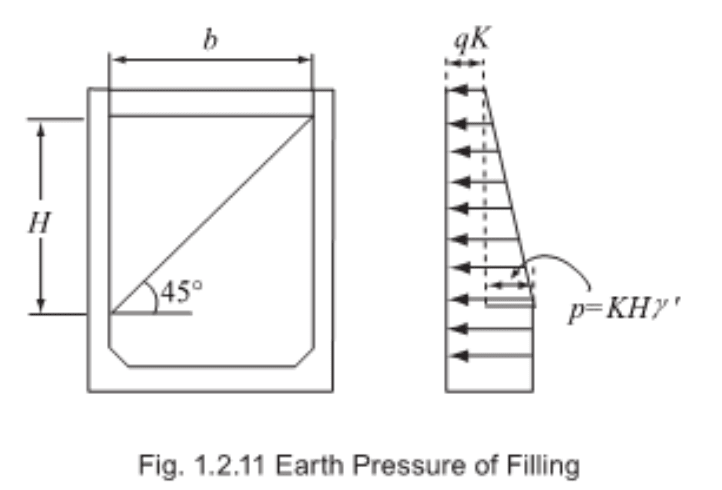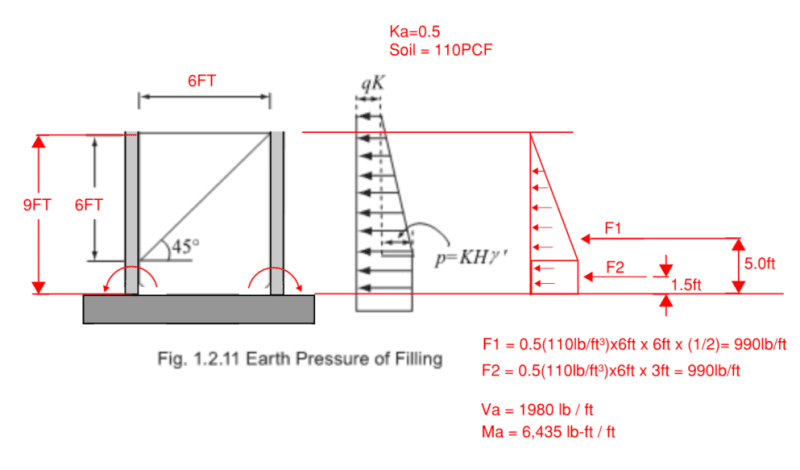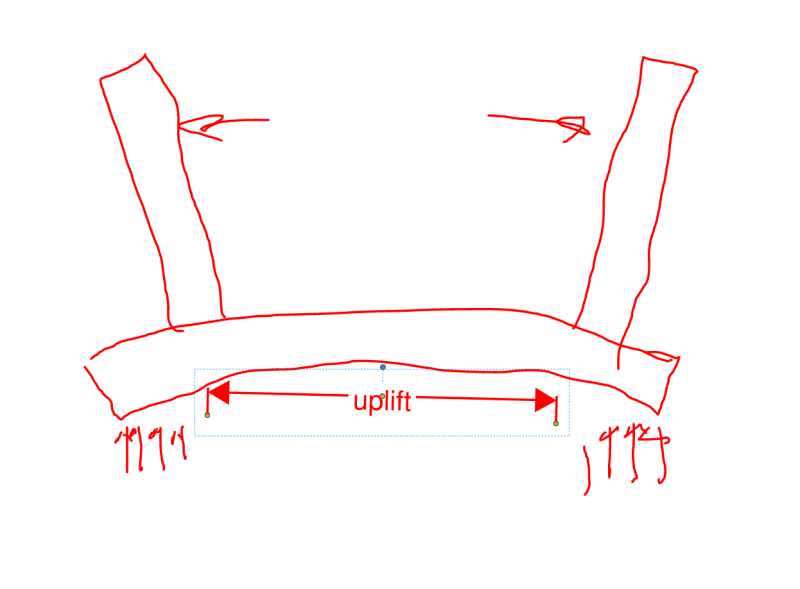This thread presented the method for handling retaining wall loads in a confined spaced.
thread255-498131
The solution was to limit the lateral pressure magnitude to the dimension of the overall retained width. This would cap the pressure for any depth that fell below the dimension b:

Now the question comes up, if these walls sit on a combined footing, how does the foundation share the load? There will be opposing OTM and outward shear on each side of the footing.
The applied reactions for the single sided analogy are:
Va = 1980 lb/ft
Ma = 6,435 lb-ft/ft

thread255-498131
The solution was to limit the lateral pressure magnitude to the dimension of the overall retained width. This would cap the pressure for any depth that fell below the dimension b:

Now the question comes up, if these walls sit on a combined footing, how does the foundation share the load? There will be opposing OTM and outward shear on each side of the footing.
The applied reactions for the single sided analogy are:
Va = 1980 lb/ft
Ma = 6,435 lb-ft/ft


